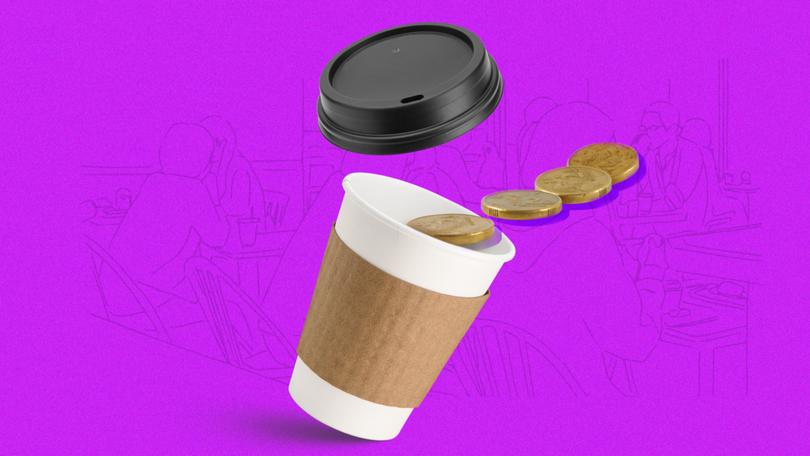KATE EMERY: We should all be paying more for our coffee, or the days of independent cafes will be gone

If you’ve ever worked out the cost of your coffee habit, this will make you even angrier than you were that day.
But you probably need to pay more.
If the days of the $5 flat white aren’t behind us, they should be. At risk is the café culture Australians so smugly praise as rivalling that of Italy, where incidentally you’ll pay about $7.46 for a small flat white.
Sign up to The Nightly's newsletters.
Get the first look at the digital newspaper, curated daily stories and breaking headlines delivered to your inbox.
By continuing you agree to our Terms and Privacy Policy.Australians’ unwillingness to pay what coffee really costs is going to send our cafes to the wall.
It already is.
Cornersmith, the beloved café in Sydney’s inner-west, closed in February because it was “simply not profitable”. Co-owner Alex Elliot-Howery said at the time hospitality was “a bit broken”, with the business squeezed by rising costs and a cost-of-living crisis that made it hard to increase prices.
“People want coffee and they want a breakfast they can afford, which I totally understand because I’m that person too,” she said. “But the reality is, you can’t really make money from what you used to be able to make money on.”
Lachlan Ward, boss of Melbourne’s St Ali coffee roasters, sounded the klaxon earlier this year, suggesting café owners had to be “brave” and increase prices because current prices were “not sustainable”.
“Unless Australian cafes start adjusting prices up and charging a fair price for what we are making, the independent café won’t exist in the future,” he said.
Across Melbourne, about a dozen cafes and restaurants have closed in the past six months.
Credit reporting firm CreditorWatch predicts one in every 13 Australian hospitality businesses will fail in the next year.
Suggesting that it’s all down to coffee prices is like saying every case of sunburn is because of climate change.
But some of it is and the best way to understand why is to talk to a restaurateur.
Duncan Timmons runs the excellent Goanna Bush Café, in South-West WA. I called him after a recent visit, when the $7.80 price tag on my oat-milk mocha had me reaching for the smelling salts.
He explained it to me with the gentleness of my Year 12 maths teacher explaining integration vs differentiation for the third time and, unlike the endlessly kind Mrs Swan, he actually made sense.
For starters, I visited on a public holiday, when the café applied a 20 per cent surcharge. That’s supposed to offset the cost of higher wages paid to staff, but it really doesn’t — the café gets about an extra $1700 from the surcharge but pays an extra $2500 in wages.
Then there’s the rising cost of everything, from milk (yes, even oat “milk”) to electricity, that 12oz takeaway cup and wages. Two years ago the latter accounted for 38 per cent of the café’s revenue. Today it’s 43 per cent.
Goanna is frequently packed out but its profit margins, once 10-12 per cent — what Duncan reckons is needed to be sustainable — have been cut by as much as half.
This is not a Duncan problem, it’s a national one. IBISWorld data shows that the average profit margin for an Australian café is 7.6 per cent, compared to 13.3 per cent for an average business.
Nobody with a caffeine habit they suspect stands between them and financial security wants to hear it but Australian coffee is cheap by international standards.
University of South Australia adjunct senior researcher Emma Felton crunched the numbers for The Conversation and found the average you’d pay for a small flat white in an Australian capital city was $4.78. That includes $5.12 in Melbourne, $4.68 in Sydney and $4.57 in Perth.
All of it is a bargain compared to $6.96 in London, $9.95 in Athens and $7.46 in Naples.
Forget the lies you’ve been telling yourself: that you can make the same product at home for $1, that it’s just coffee beans and milk, that the markup is pure profit for café owners, who are famously all millionaires.
Coffee is more expensive than you want it to be and yet it’s still not pricey enough.
Also, the stuff you make at home is a bit rubbish and I think you know that.
